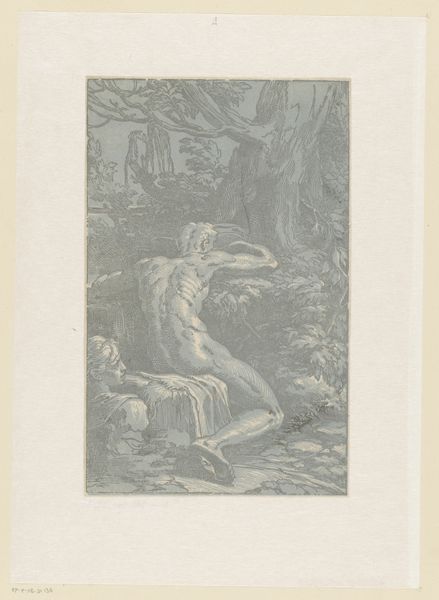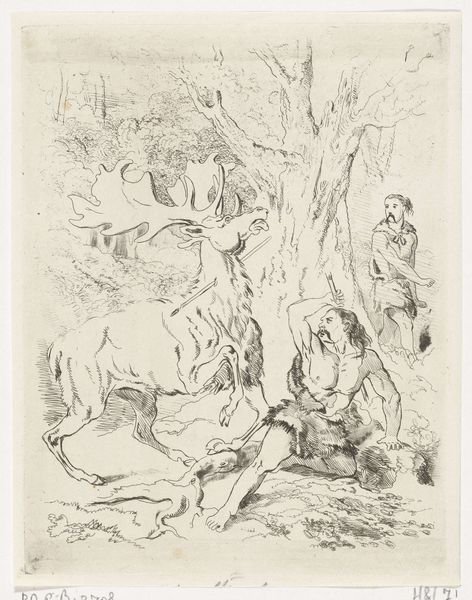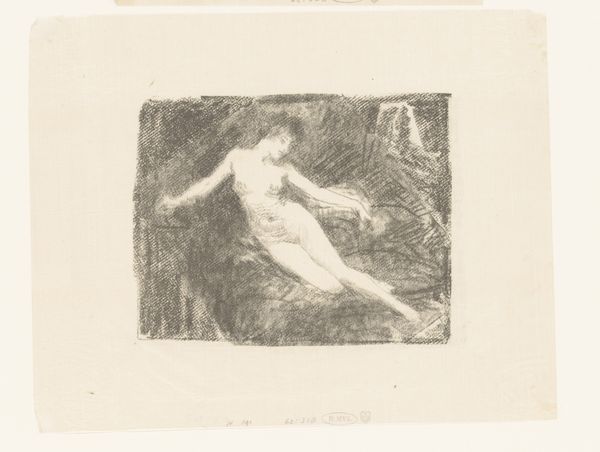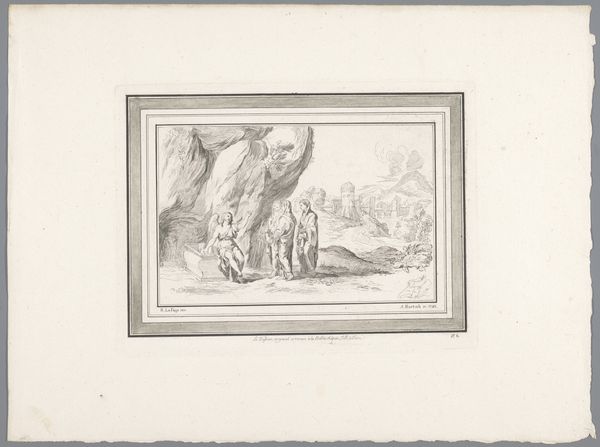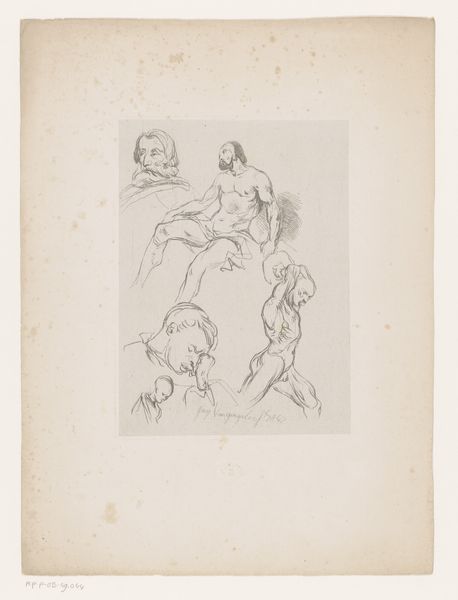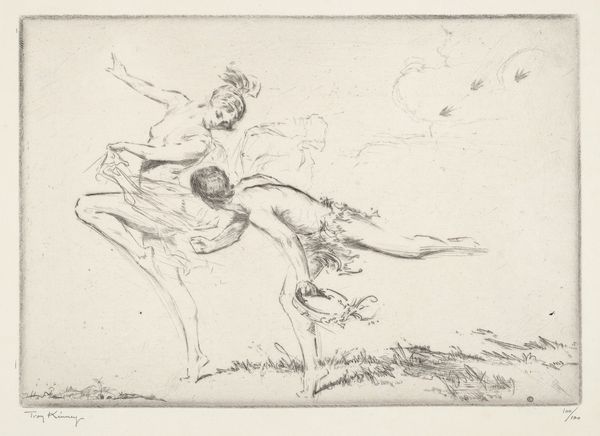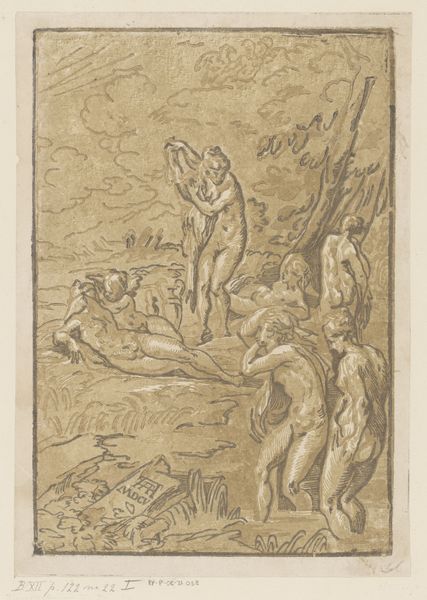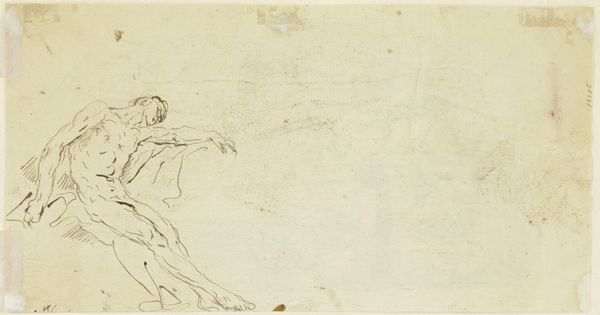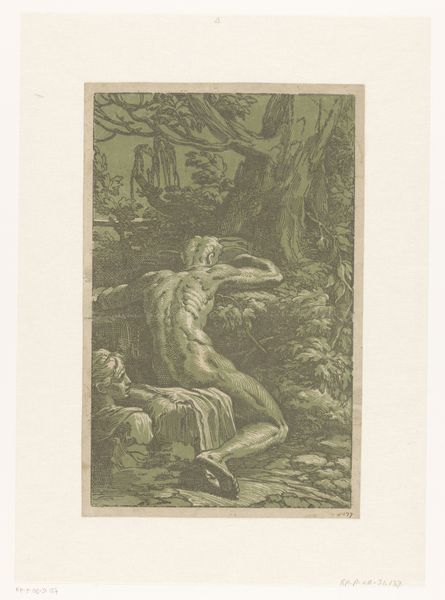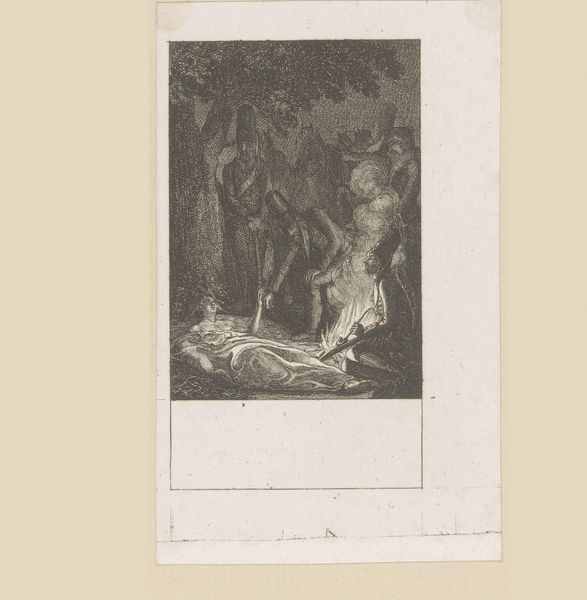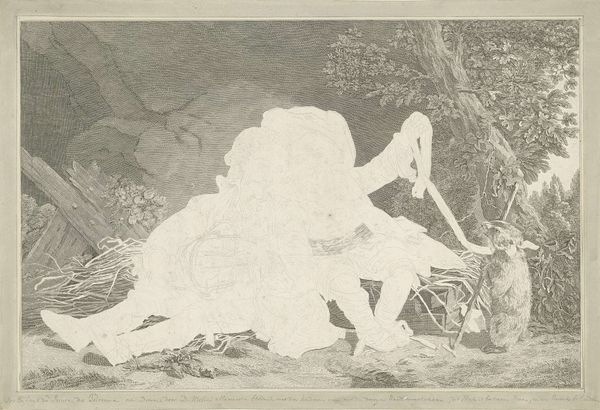
Dimensions: height 115 mm, width 82 mm
Copyright: Rijks Museum: Open Domain
Curator: Let's turn our attention to this etching and pen drawing by Carl Friedrich Holtzmann. It is titled H. Hieronymus and dates roughly between 1750 and 1811. Editor: The figure practically leaps off the page, doesn’t it? Such a striking contrast between the darkness of the ink and the untouched paper, it amplifies the scene's inherent drama. Curator: Absolutely. The piece references Saint Jerome, a pivotal figure in the early Church known for translating the Bible into Latin. The image draws on historical representations of Jerome, usually depicting him with symbols of scholarly and ascetic life. We must also consider this work's place within the visual rhetoric of its time. Academic art in the 18th century often leaned heavily on allegorical representations of religious figures as models for morality and erudition, but filtered through enlightenment ideals. Editor: The way Holtzmann has employed line—notice the distinct lack of shading. It brings forward a graphic quality that’s less about three-dimensionality and more about defining contours, highlighting the starkness of the composition. I feel it mirrors a more direct, intellectualized approach, befitting the man it portrays. Curator: Right, this starkness pushes us to examine how Holtzmann, living during the Enlightenment, viewed this historical figure, whose life reflected pre-Enlightenment devotion. There's a push and pull between historical reverence and the emergent focus on reason and empirical knowledge. The placement of the skull, often associated with Vanitas paintings, reflects a meditation on mortality. But mortality perceived within a framework that acknowledges life beyond the temporal. Editor: And how he is directing his right arm forward? A movement beautifully described, leading my eyes to some distant goal and yet contrasting so fiercely with the other hand pressing firmly on the table; is Holtzmann making a pictorial assertion for the importance of being tethered to both worlds? Curator: In considering Holtzmann's ‘H. Hieronymus,’ we’re invited to explore the relationship between tradition, enlightenment values, and personal contemplation. This rendering of Jerome doesn’t just tell a saint's story; it reveals a particular interpretation of the past filtered through the lens of present understanding and changing cultural ideals. Editor: I concur. The beauty of Holtzmann's line is undeniable; nevertheless, its power derives from its subtle interplays of dark and light. Together these form the components which permit it to endure across time and create relevance even in this modern world.
Comments
No comments
Be the first to comment and join the conversation on the ultimate creative platform.

